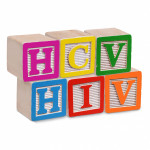Eradicating hepatitis C virus among French people living with HIV could take only a decade if current HCV treatment trends persist. However, achieving such a feat would require a major HCV treatment scale-up among HIV/HCV-positive men who have sex with men (MSM), who are at high risk of reinfection with hep C.
There is an emerging epidemic of sexually transmitted HCV among HIV-positive MSM in Western nations.
Researchers created a mathematical model to project the impact of direct-acting antiviral treatment of HCV on HIV/HCV-positive people in France, basing the model on epidemiological data from the French DatAIDS cohort. They factored in 2012 to 2015 incidence (yearly rate of new infections), prevalence (total number of people with the virus) and coverage (the proportion of French people with HIV being treated for HCV). They also considered the number of people with HCV/HIV who do not know they have hep C according to a previously published model.
Victor Virlogueux of INSERM in Lyon, France, presented findings from the study at the 2017 Conference on Retroviruses and Opportunistic Infections (CROI) in Seattle.
The investigators considered the impact of DAAs on eight risk groups: MSM at high and low risk of HCV reinfection, male and female heterosexuals, injection drug users and people with “other risk.”
As of January 2016, an estimated 156,811 people were estimated to be HIV-positive in France, of whom 131,861 were in care for that virus. An estimated 24,900 of the overall HIV population was not diagnosed with that virus. Of all the people with HIV, 7,939 (5.1 percent) had chronic HCV, of whom 7,216 were in care for hep C.
In 2015, an estimated 30 percent of those with HIV and HCV were treated for the latter virus. If this trend continues, the researchers project that by 2021, the HCV rate among French people with HIV will drop to 1.31 percent, followed by a drop to 0.55 percent in 2026. This trend would be relatively consistent in most of the eight risk groups, including low-risk MSM.
However, given this hep C treatment trend, high-risk MSM with HIV would actually see their HCV rate rise from 2.39 percent in 2016 to 2.46 percent in 2021 and to 3.96 percent in 2026, owing to high HCV reinfection rates. The study authors projected that if hep C treatment were scaled up to cover 50 percent and 70 percent of HCV/HIV-positive high-risk MSM, their HCV prevalence rate would drop to a respective 1.1 percent and 0.5 percent in 2021 and 0.86 percent and 0.19 percent in 2026.
The French investigators predicted that in the coming years, the majority of new HCV infections and reinfections with the virus among people with HIV will occur among high-risk MSM and those with undiagnosed hep C.
To watch a web cast of a press confence about these findings, click here.







Comments
Comments